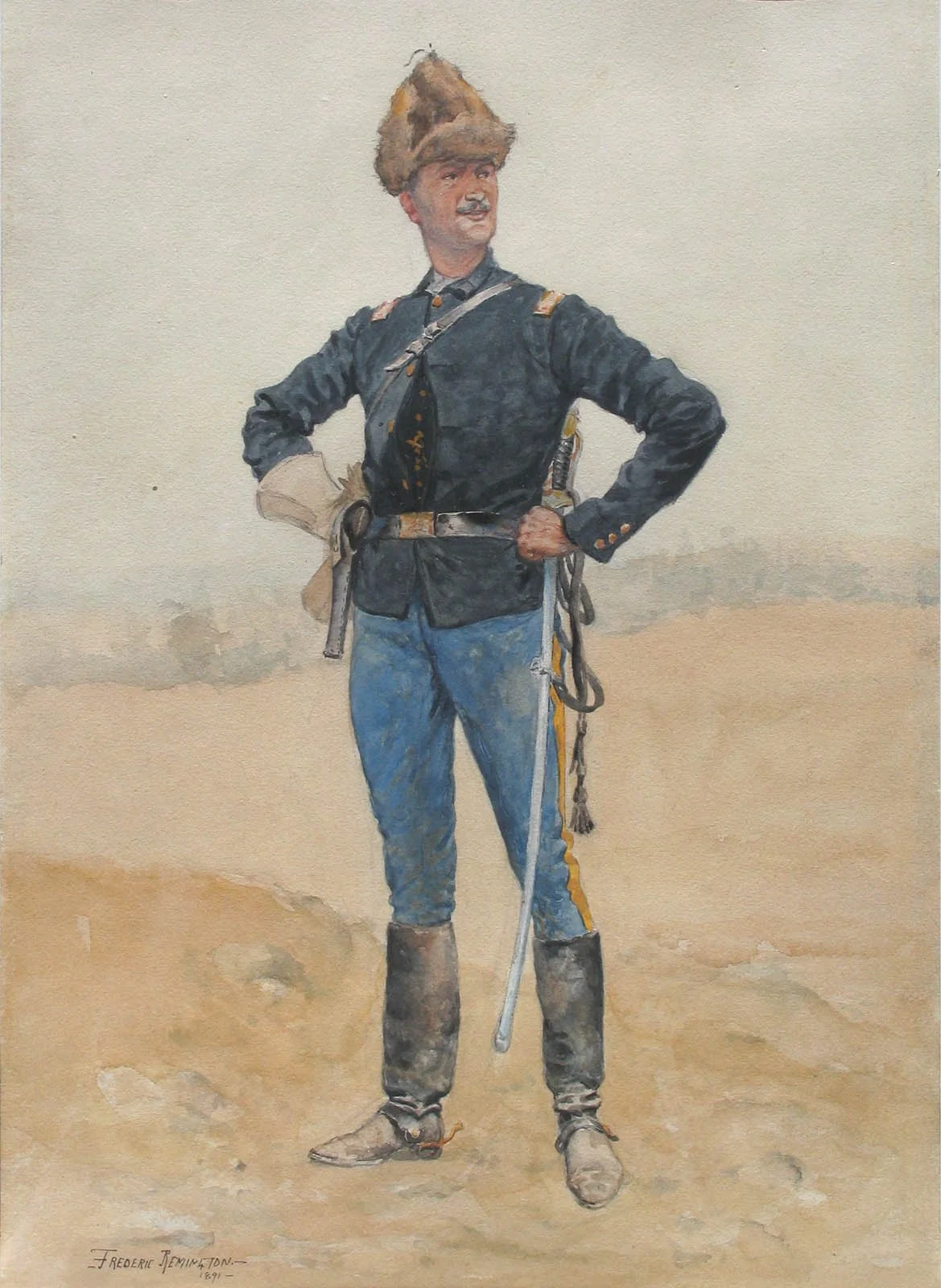Frederic Remington
1861-1909
A New Yorker by birth, Frederic Remington's famed career as the quintessential Western artist was launched by a marriage proposal. The father of the prospective bride refused his daughter's hand to the feckless, young artist. Remington headed west, partly to forget and partly to show his prospective father-in-law that he had talent. Remington bought a small ranch in Kansas and began painting. He eventually sold some paintings and drawings and grew confident of his ability to return to New York and make a living as an artist and marry his intended.
At first, Remington found it hard to make a living in New York on the sale of his paintings alone. He began to do illustrations for Outing Magazine, Harper's Weekly, Youth's Companion and Century. Remington repeatedly traveled west to do research for his illustrations. He was an observer of many historical events, such as the battle at Wounded Knee. Not only did Remington record these events with pen, ink and paint, but he wrote about them. The artist/journalist became a war correspondent to Cuba in 1898, where he witnessed the capture of San Juan Hill. Remington called himself a historian by virtue of his collected magazine articles, illustrated by himself, and wrote two historical novels, John Ermine of the Yellowstone and The Way of the Indian. He also completed illustrations for his friend Owen Wister's Done in the Open. Remington's Century drawings were for articles written by Theodore Roosevelt. The collaboration was eventually published in book form. Immensely popular, the book contained ninety-nine Remington drawings and greatly furthered his career.
In 1909, at the height of his fame, Remington died of appendicitis at the age of forty-eight. His death did not diminish the popularity of his drawings, paintings and bronzes, and in the years since his works have been used to illustrate the history of the American West.
Actively seeking works by Frederic Remington.

